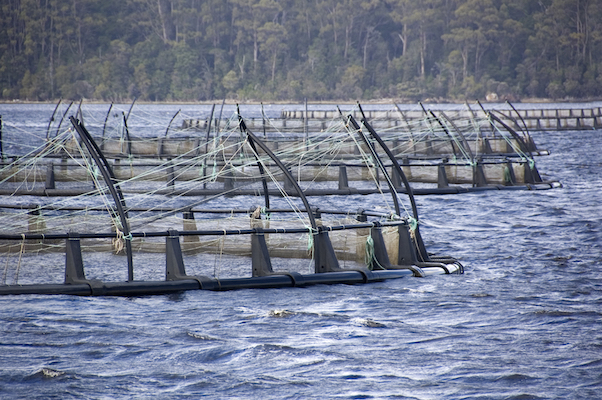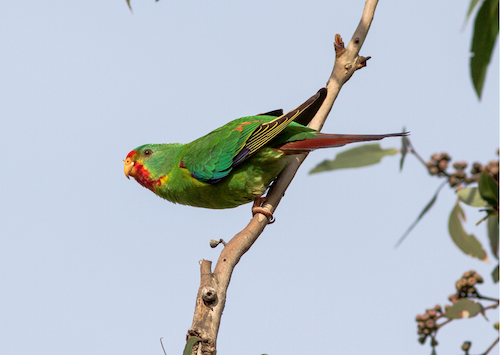For 15 years, Tasmanians have been kept in the dark about the true state of their environment. But last week, the decade-long-delayed State of the Environment (SoE) Report was finally tabled in parliament.
The report paints an alarming picture of an environment under significant strain and facing multiple threats. Of the 29 environmental categories this report assessed, 16 were found to be getting worse and 11 were in poor condition. The list of threatened plants and animals in Tasmania is growing fast, and sensitive ecosystems unique to the Island state are being decimated by climate change, vegetation loss and invasive species.

The SoE report provides a critical health check of the state’s land, rivers, seas, coasts and air and is developed using independent scientific expertise. Under the State Policies and Projects Act, this report is supposed to be produced every five years, but Tasmanians have been waiting since 2009 for an updated environmental report card for their state.
In 2022, acting on behalf of our client, the Australia Institute, EDO compelled the then Planning Minister Michael Ferguson to direct the Tasmanian Planning Commission to prepare the SoE report by no later than June 2024.
The commission provided the SoE report to the minister on 30 August this year, but Planning Minister Felix Ellis refused to publish the report before November 2024. However, with the strong support of community and environmental groups, the Tasmanian Parliament passed a motion requiring the SoE report to be tabled before the state budget estimates hearings.
“The Resource Management and Planning System (RMPS) established under Tasmanian law is supposed to ensure that our environment is protected while providing for sustainable development.
“Over the past decade and in the face of climate, pollution and extinction crises, the Tasmanian Government has been systematically undermining the environmental protections and community rights provided under RMPS laws.
“The jury has now delivered its verdict on those changes. The long-awaited SoE report provides a sobering assessment of the abject failure of the RMPS and decision-makers to conserve our precious and life-supporting natural systems.
“Luckily, the report provides a roadmap out of this disastrous situation. The Tasmanian Government must accept and act on all the expert recommendations outlined in the SoE report.”
EDO Managing Lawyer Claire Bookless
What does the report tell us?
Since the last SoE report was published, Tasmania’s native vegetation decreased by at least 3% and became far more fragmented.
Around one-third of Tasmania’s native plants are now classified as threatened, 154 species are listed as endangered and at risk of extinction, and 20 species are now extinct.
The report outlines significant impacts from climate change, including the warming of seas around Tasmania, which are heating faster than the global average, beach erosion due to rising sea levels, and the disappearance of the state’s unique kelp forests.

What solutions does the report offer?
The report makes 16 recommendations for better management of Tasmania’s environment including:
- Development of a long-term vision for the Tasmanian environment and a strategy to implement that vision, and reporting to parliament on progress toward the goals and targets of the strategy every two years.
- Identifying opportunities to collaborate with Tasmanian Aboriginal groups and incorporating Aboriginal knowledge and values into better care of the environment.
- Development of an environmental data management strategy to ensure the best information is available to inform environmental decision-making.
- Tasmania’s Resource Management and Planning System legislation be amended to align with Australia’s international legal obligations and ensure it provides for contemporary and effective decision-making.
What happens next?
The Tasmanian Government is yet to formally respond to the SoE report, however, it is already having an impact.
The Tasmanian Government’s budget is being scrutinised in parliamentary estimates hearings, with the Premier and Ministers for Planning, Resources, and Environment facing questions on how the government plans to reverse the environmental declines identified in the SoE report. Tasmania’s public sector union has been calling for proposed cuts to staffing in the Department of Natural Resources and Environment to be abandoned in the wake of the report.
The SoE report’s recommendations provide a roadmap for addressing the problems it identifies. EDO will use the report to advocate for improvements to Tasmania’s environmental, resource and planning laws to address the key drivers for declines, including:
- climate change
- vegetation and habitat loss
- pollution; and
- waste.
You can find the Tasmania 2024 State of the Environment Report with the full list of recommendations here.





